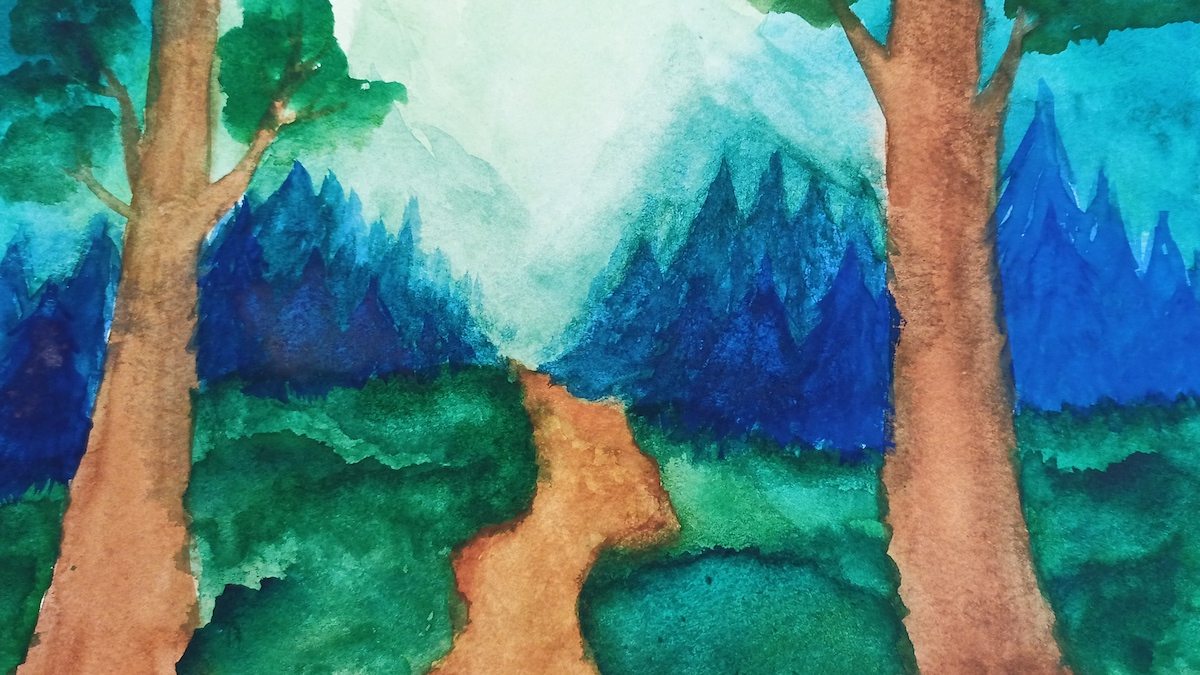Virtual brushstrokes for mental health
Campus Rec’s Virtual Paint Night offers students the chance to create and connect from the comfort of their home.

It’s no secret that creativity bolsters mental and physical health. No matter what form that expression takes, the benefits are many: a greater ability to process a hard-to-articulate emotion, social connections that combat feelings of isolation and even a stronger immune system.
With that in mind, UNC Campus Recreation began offering Virtual Paint Night, a biweekly recreational painting class, this semester. While Campus Rec’s programming typically focuses on physical health — from group exercise classes to guided hikes — Virtual Paint Night offers students a new way to connect while also addressing mental health through art.
Tori Hooker, senior assistant director for sport programs at Campus Rec, leads the class. “I enjoy doing it on my own, so I just thought some students might find some enjoyment out of it,” she said. “If nothing else, it’s some stress relief.”
Hooker draws on art therapy research to frame Virtual Paint Night. “We talk about what they’re feeling, what they’re experiencing,” she said. “But then I put their minds at ease and focus on something else other than everything else that’s surrounding us.”
Although Virtual Paint Night originated to connect students who were quarantining or isolating on campus, Hooker says that the entire Carolina community is welcome. Graduate student Mimi Pham heard about the event in an email and decided to check it out. “I was already interested in watercolor, and I wanted to get back into it,” she explained. “It was really relaxing.”
Hooker chose watercolor because it’s an easier entry point — both in terms of cost and expertise — than something like acrylic. But if a student doesn’t have a watercolor set, there are plenty of other options.
“Although we’re painting and we’re saying watercolor, students can use pen, pencil, colored pencils,” Hooker explained. In fact, during the first session, some students even used digital apps to draw and paint. “It’s about trying to make it as accessible and friendly as possible,” she added.
After all, the point is less about what attendees are using to create and more that they’re simply creating. Pham says there’s no need to be anxious about skill level. “The instructor’s really helpful with tips and tricks,” she said.
Students can keep their cameras off during the session, but Hooker encourages everyone to share what they’ve created at the end. During that first session, attendees agreed to paint landscapes, and Hooker was struck by the different scenes everyone chose to depict. “I was inspired to paint a beach, but some painted mountains, and some painted sunsets,” she said. “It’s really your own adventure.”
The mental health benefits of art, or really any creative practice, have become especially important when many are feeling isolated and stressed from the ongoing pandemic. It’s an opportunity to express what might not be easily shared in other ways. George O’Keeffe famously said, “I found that I could say things with color and shapes that I couldn’t say in any other way.”
“People are trying to hold onto anything they can have control over,” Hooker said. “Creating your own piece of art, that’s something you can have control over. There’s something tangible about creating things and having a product afterward.”
And, if nothing else, it’s a fun way to pass an evening — a semi-personalized paint night in your very own home.
Find out more about upcoming hourlong Virtual Paint Nights. Registration is required.
For those who are interested in joining, Hooker recommends gathering supplies ahead of time. She’s prepared a list of low-cost brushes and watercolor paints.
- Affordable watercolor set
- Variety pack of paint brushes
- Watercolor paper at Target or Michael’s




